Restaurant marketing is the main way that you will be able to reach new people, showcase your offerings, and attract more customers, but you will need to stay up-to-date with the latest restaurant marketing trends, too. This article teaches you about emerging marketing techniques and strategies in 2025 to remain fully competitive.
Table of Contents:
- What is the Restaurant Industry?
- Why is it Important to Follow Restaurant Marketing Trends?
- 16 Popular Restaurant Marketing Trends of 2025
- 1. Guest Lifetime Value
- 2. Personalization
- 3. Google My Business
- 4. Playful Restaurant Experiences
- 5. Your Website & SEO
- 6. Email Marketing
- 7. Restaurant Chatbots
- 8. Local Keywords
- 9. Optimizing Reviews
- 10. Hyper-Personalization and Data Analytics
- 11. Customer Loyalty Programs
- 12. Restaurant POS Systems
- 13. Online Ordering
- 14. QR Code Restaurant Menus
- 15. Local Community Engagement
- 16. Social Media Marketing
- Restaurant Marketing and Staffing Shortages
- Restaurant Technology and Restaurant Marketing
- Restaurant Marketing and Restaurant Management Software
- Major Trends for Restaurateurs to Understand
What is the Restaurant Industry?
Defining the restaurant industry is a good idea before following the main restaurant marketing trends. A simple description of the restaurant industry is the service industry section, which is focused on providing food services where customers can eat on the premises.
Essentially, any business that allows customers to order and eat food on-site can be considered part of the restaurant industry. In other words, aside from conventional restaurants, the industry can also include cafés, bars, and other premises that offer on-site food services, even if they provide other benefits.
In “Restaurant Industry: Overview, Types, Examples and More”, you can explore this definition further, learn how the restaurant industry and the food service industry differ, and view examples of the various restaurant types.
Why is it Important to Follow Restaurant Marketing Trends?
Restaurant marketing is vital because it allows restaurants to establish brand values, become known to individuals, attract new customers, and promote their main offerings. However, keeping pace with the latest trends is essential beyond simply engaging in a marketing strategy.
A failure to keep up with these restaurant marketing trends can provide rival restaurants with a significant competitive edge because they will be using techniques you are not and because they will potentially be catering to customer needs that you are unaware of. These trends can also be seen as tried and tested techniques too.
By building awareness of these trends, you can ensure you are using the most essential and successful methods for reaching people and adopting a more measured, targeted, and strategic approach.
16 Popular Restaurant Marketing Trends of 2025
In the sections below, you can learn about the most popular restaurant marketing trends:
1. Guest Lifetime Value
A growing restaurant marketing trend involves calculating and tracking guest lifetime value and focusing efforts on the customers who provide the greatest value. For many restaurants, a large percentage of business comes from a relatively small percentage of the customer base, so maximizing customer lifetime value from regular visitors helps to boost revenue more than constantly chasing new customers who may only visit the restaurant once.
Repeat customers can be targeted with specific marketing messages and special offers in order to keep your restaurant in their thoughts. You can also analyze business data and determine the demographics that offer the best lifetime value, the channels that often produce loyal customers, and the best ways to turn one-time customers into repeat customers. Once you have this information, you can use it to optimize your restaurant marketing strategy.
Video: What is CLV?
2. Personalization
Personalization is a potent restaurant marketing tool that restaurant management teams need to take full advantage of. Visitors to your restaurant want to know that they are valued as individuals and not just as a nameless, faceless entity, so you need to tailor your offering to them.
As mentioned, a customer loyalty program can form one part of this, but your efforts must go further. Do you have a system for tracking customers’ individual preferences? Can you personalize email communications so that you address them by name? Do you have a way to let customers alert you to birthdays and special events?
Ultimately, anything your restaurant can do to make people feel valued as individuals will help to improve personalization. In general, a more personalized customer experience is a more pleasant and more memorable one.
3. Google My Business
Visibility on Google, the world’s most popular online search engine, is a great way to increase business. Your presence can be significantly boosted by securing your Google My Business page. This will enable you to register your business with Google and reap various rewards.
In particular, by securing your My Business page, you can have a presence on Google Maps and boost your visibility on local search results. You can also provide valuable information, such as your restaurant opening times, your menu, and photographs of your restaurant, and search engine users will also be able to access customer reviews.
Essentially, your Google My Business page is a great way to manage your presence across the various Google platforms from a single dashboard. It also allows you to manage reviews and help you look more professional easily. According to the Local Consumer Review Survey by Brightlocal, 98% of respondents said they read online reviews for local businesses, so Google reviews are a big part of successful digital marketing.
Video: Add Menu to Google My Business
4. Playful Restaurant Experiences
Another emerging restaurant marketing tactic is to focus on providing playful dining experiences. Think of imaginative ways to make your restaurant more fun and try to capitalize on the user-generated content that could spread on social media as a result. Deliver high-quality food, but do so in a way that people will truly remember forever.
When you think about it, the options here are almost endless. You could stage a special night in your restaurant where people attend wearing fun costumes or provide a time period where guests with children can play games. Alternatively, you can make unique, limited-time menu items or run competitions for customers to create their own menu item.
Video: Immersive Dining Experience
5. Your Website & SEO
Your website is one of the most valuable restaurant marketing channels because it can simultaneously provide customers with all the information they need and allow them to book with your restaurant. According to the US Restaurant Industry Survey by Zippia, 77% of consumers will visit a restaurant’s website before dining or ordering out food.
Customers interested in visiting your restaurant will often go to your website first to get a feel for the business and to view information about the food on offer. If your website is high in quality, you should be able to encourage many of these visitors to take the next step and book a table or even order a takeaway.
However, you can potentially attract visitors unaware of your restaurant or website by using search engine optimization (SEO) techniques to boost your placement on search engine results pages. In particular, you should use keywords intelligently and focus on local search SEO techniques.
Video: Restaurant SEO: How To Digitally Market Your Restaurant Locally
6. Email Marketing
Email marketing remains one of the most important restaurant marketing strategies because it provides a way to reach many people with promotional content. Your marketing emails help to keep your restaurant in people’s thoughts, and you can use these emails to share news, special offers and other relevant updates.
When compared to many other marketing strategies, email marketing is relatively low-cost. Through mailing lists and the use of CRM tools, your marketing emails can also be easily personalized. Emails can help you to build brand awareness and generate business. You could also use emails to encourage customers to write reviews.
Video: Effective Restaurant Emails
7. Restaurant Chatbots
A restaurant chatbot is an example of restaurant technology powered by artificial intelligence and machine learning. The chatbot will be able to process and interpret online chat-based communications from customers and respond intelligently, replicating the kind of communication a customer service rep would usually be responsible for.
A restaurant chatbot can automate customer service communications, delivering rapid responses at all times of the day, even if staff are unavailable. However, chatbots can also be used to make reservations or to complete food orders, and this can ensure that service is swift across the board.
In the “Restaurant Chatbots: What Are They, Their Use and Benefits” article, you can learn more about this technology, including how restaurant chatbots work, how they are deployed, and why they are advantageous.
Video: A 2-Minute Look at a Restaurant Chatbot
8. Local Keywords
Local keywords are keyword search terms, which contain text that is location-specific. This will typically consist of valuable industry keywords, with location terms added (e.g. best Italian restaurants in Brooklyn).
Targeting local keywords with your restaurant marketing and SEO strategy is important because it can elevate your ranking on Google’s results pages. This is especially crucial for mobile searches using location tracking.
Over 60% of all search engine visits in the US originate from mobile. By carefully adding local keywords in your marketing content, you can improve your ranking on search engine results pages and gain more clicks.
Local keywords can include the name of your town or city, but they could also be more specific. For instance, it may be valuable to target a local landmark (e.g. Italian restaurants near Madison Square Garden) or your street name.
Video: How to Do Local Keyword Research for Your Small Business
9. Optimizing Reviews
Today, restaurant reviews form a critical part of the restaurant marketing mix. It is important to provide high-quality service, encourage reviews and respond to online reviews appropriately.
Optimizing reviews on online platforms is vital because many potential diners will check reviews before booking. You want to maximize positive reviews and minimize the prevalence and impact of negative ones.
One way to encourage reviews is to provide incentives for guests. For example, you might provide a discount code for people who leave a review on a certain platform, or you could throw in a freebie as they leave.
When you respond to negative reviews, be polite, reasonable and take genuine criticism on board.
Video: How to Setup and Optimize Your Restaurant Google Business Profile
10. Hyper-Personalization and Data Analytics
Hyper-personalization is the creation of highly personalized guest experiences. This can be achieved by using data analytics to identify behavior patterns and preferences, then modifying your approach.
The role of personalization is growing all the time, as customers want to be treated as individuals. Customers are also much more willing to provide personal data to businesses if it results in an improved guest experience.
Restaurants can use hyper-personalization techniques within restaurant marketing, targeting specific demographics with promotions and advertisements that will appeal to them, or making intelligent recommendations through an app.
This can increase bookings or takeaway orders and help to make customers feel more valued at the same time.
11. Customer Loyalty Programs
Customer loyalty programs are among the most popular restaurant marketing trends because they help not only attract one-off visits but ensure customers keep coming back time and time again. They can provide a clear incentive for customers to return and allow restaurants to maximize the lifetime customer value for those who participate.
There are different approaches to this, and each restaurant will have its own strategy. For instance, it could be that each visit earns a customer a stamp, and after they acquire five stamps, they are entitled to money off. Alternatively, customer loyalty program members could receive exclusive discount codes or coupons.
Regardless, the key to a great customer loyalty program is to make customers feel appreciated for their loyalty to your restaurant. Reward them for returning, and they will continue to do so. This helps you fill your restaurant daily and increases the likelihood they will recommend you to friends and family.
12. Restaurant POS Systems
Restaurant POS systems, or point of sale systems, are used to carry out retail transactions. While processing payments from customers may be their primary function, they can also collect valuable data and feed this into existing systems, which can then be used to inform your restaurant marketing campaigns and strategies.
You may also be able to promote aspects of your POS system, such as the ability to process contactless card payments, the ability to process payments from mobile wallets, and the ability to pay via your mobile app.
In the article “POS Systems: Overview and Importance in the Hospitality Industry” you will be able to learn more about what POS systems are, how they work, why they are so valuable to those working in the hospitality industry, and how they can function in combination with the other management systems you are using.
Video: Meet the new Restaurant POS
13. Online Ordering
Although a restaurant has to allow customers to eat on premises to be categorized as part of the restaurant industry, at least according to most standard definitions, this does not mean the on-site dining experience is the only experience you can offer. Increasingly, customers expect to be able to order restaurant food online for collection or delivery.
Meeting this expectation can be great for your restaurant marketing efforts, as it allows you to promote online ordering across social media channels, provide customers with direct links to your ordering page, and ensure you can generate additional income even when your restaurant is fully booked.
However, you will need to ensure the restaurant management system you have in place can contend with online orders and that the ordering system provides a seamless user experience. Ideally, you should allow customers to pay online and provide payment options using PayPal, Apple Pay, and similar services.
Video: Demo of Online Ordering
14. QR Code Restaurant Menus
QR codes are becoming more widespread and offer great convenience, allowing smartphone users to scan a QR code and click a link to access online content. A growing number of businesses are capitalizing on this for marketing purposes, and it can be a beneficial form of restaurant marketing.
By creating a QR code that connects to your restaurant’s menu or mobile app, you can give customers easy access from anywhere they have their smartphone. You can include the QR code in your marketing emails, customer service communications, social media channels, and restaurant building.
You can use QR codes within the restaurant so that customers can immediately access the menu. You could even drastically reduce the physical menus you keep within the premises. A QR code that links to a menu with ordering capabilities can also serve as an excellent upselling tool because customers can quickly order more drinks or more food items without having to catch the waiting staff’s attention.
Video: QR Code Menu restaurants
15. Local Community Engagement
Finally, one of the best restaurant marketing approaches is to try and position your restaurant as an integral part of the local community. This can mean getting involved in local campaigns and creating partnerships with local businesses, such as hotels, bars, and pubs, where both businesses can refer customers to one another.
Beyond this, there may be opportunities to participate in local events, sponsor a local sports team, host events for people or businesses nearby, and find ways to generate positive PR through local newspapers.
Ultimately, customers are willing to go out of their way to support businesses providing clear value to the local community. This is especially true in difficult times, and evidence of this was seen during the COVID-19 pandemic when many restaurants and local businesses received considerable support from their communities.
Table: Examples of Community Engagement Activities
| Community Engagement Activity | Description | Benefits |
|---|---|---|
| Hosting Local Events | Organizing events such as fundraisers, live music nights, or community gatherings to bring people together and create a sense of belonging. | Increases foot traffic, enhances brand visibility, and fosters positive relationships with locals. |
| Supporting Local Charities | Partnering with local charities or organizations to donate a portion of sales or sponsor community initiatives, demonstrating commitment to social responsibility. | Builds goodwill within the community, strengthens brand reputation, and generates positive word-of-mouth. |
| Collaborating with Local Suppliers | Sourcing ingredients or products from local farms, breweries, or artisans to showcase regional flavors and support the local economy. | Promotes sustainability, highlights unique offerings, and differentiates from competitors. |
| Volunteer Programs | Engaging employees in volunteer activities such as beach clean-ups, food drives, or mentoring programs to give back to the community and make a positive impact. | Boosts employee morale, strengthens community ties, fosters a sense of pride in the workplace. |
16. Social Media Marketing
Social media platforms are a major marketing channel for businesses of all kinds, and they also apply to restaurant marketing. Many customers will look for restaurants on social media sites like Facebook, Twitter, and Instagram to get an idea of what they can expect from the restaurant before booking.
Your hotel social media marketing can be used to show images of your dishes and include video marketing content. This could take the form of video restaurant tours or perhaps a ‘behind the scene’ look at how the kitchen operates. You can also share links to content marketing, such as blog posts.
Your social media channels should include contact information and, if possible, menus. You can also use the channels to interact with customers, manage reviews, respond to suggestions or feedback, answer questions, and highlight some of your more comprehensive brand values so that social media users get a clear sense of your restaurant.
Video: 5 Social Media Practices for Restaurants
Restaurant Marketing and Staffing Shortages
A major challenge for many restaurants has been staff shortages. However, many of the best restaurant marketing strategies can reduce restaurant staff demands and help businesses cope with fewer employees. A good example of this is online ordering, which can help reduce the burden on restaurant waiting staff.
In the article “How to Solve Staffing Shortages in the Hospitality Industry with Technology” you will be able to learn about the staffing shortages that are affecting the hospitality industry and explore some of the creative ways that technology is being used to ease the burden on staff and help restaurants and other businesses to cope.
Restaurant Technology and Restaurant Marketing
Good restaurant marketing will often rely on using the right technology, with QR codes and restaurant POS systems as clear examples. That said, restaurant technology also has other uses beyond marketing, and it is important to familiarise yourself with the latest trends.
In the “Latest Restaurant Technology Trends You Need to Know About” article, you can explore the most significant technology trends disrupting the industry and learn how this technology is deployed.
Restaurant Marketing and Restaurant Management Software
POS systems used in restaurant marketing are a good example of restaurant management software in action. However, various other software solutions can also be beneficial, including order management, CRM, marketing and loyalty, and restaurant chatbot software.
In the article “Restaurant Management Software: A Complete Overview”, you will find all the information you need about these software solutions and various others, including the main features and the primary uses.
Major Trends for Restaurateurs to Understand
Restaurant marketing is one of the most important components of successfully managing a restaurant. Still, there are other important trends to keep up-to-date with too, including the latest trends related to food service and food options, or the latest trends related to hotel technology, like automation and online ordering systems.
In the “Restaurant Trends You Must Know As a Restaurateur” guide, you will gain a deeper understanding of not only the major marketing trends, but trends within these other key areas as well.
Restaurant Marketing FAQs
Restaurant marketing is crucial because it is the main way to reach new people and potentially attract new customers. The trends outlined in this post are among the most popular and most important for the current time and can be used to keep pace with rivals and even gain a competitive advantage over many of them.
Want to Learn More About Marketing in Related Industries?
It is essential to be aware of the current and upcoming marketing trends in the hospitality & tourism-related industries. While some trends can affect multiple industries, some are very specific to the industry. You can learn more about marketing trends within related industries in the following articles.
- Hotel Marketing; The Latest Trends in the Hotel Industry
- Hospitality Marketing Trends: Must-Know Upcoming Trends
- The Latest Travel Marketing Tips to Optimize Your Results
- Tourism Marketing: Brand New Marketing Tips to Boost Your Results
- Essential Hotel Marketing Strategies
More Tips to Grow Your Business
Revfine.com is the leading knowledge platform for the hospitality and travel industry. Professionals use our insights, strategies, and actionable tips to get inspired, optimize revenue, innovate processes, and improve customer experience.Explore expert advice on management, marketing, revenue management, operations, software, and technology in our dedicated Hotel, Hospitality, and Travel & Tourism categories.
This article is written by:
Hi, I am Martijn Barten, founder of Revfine.com. With 20 years of experience in the hospitality industry, I specialize in optimizing revenue by combining revenue management with marketing strategies. I have successfully developed, implemented, and managed revenue management and marketing strategies for individual properties and multi-property portfolios.

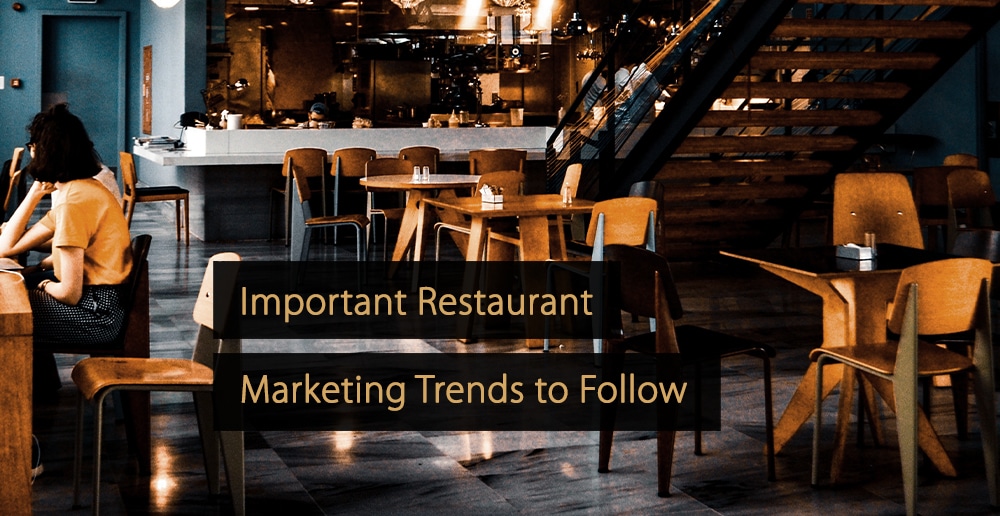
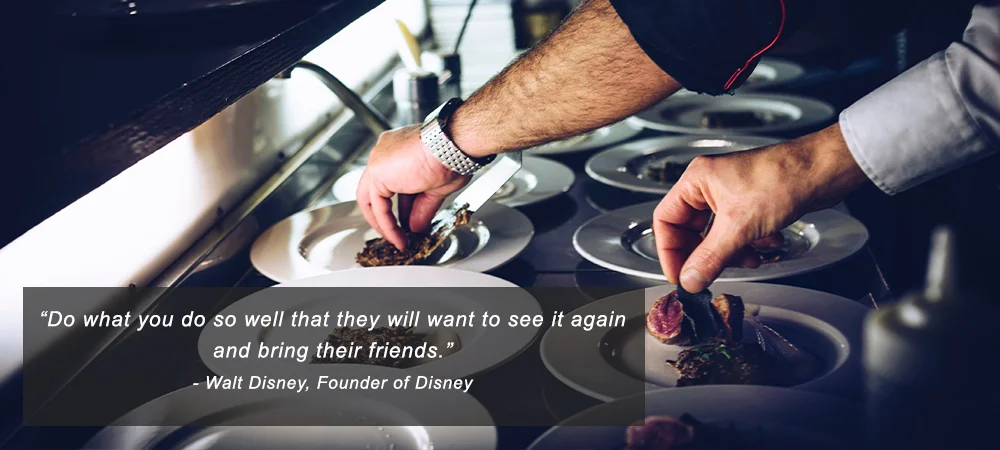
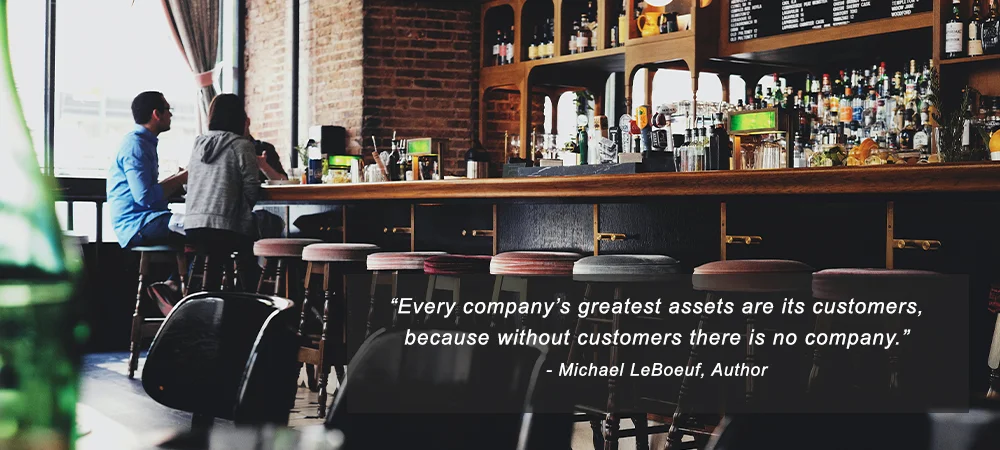


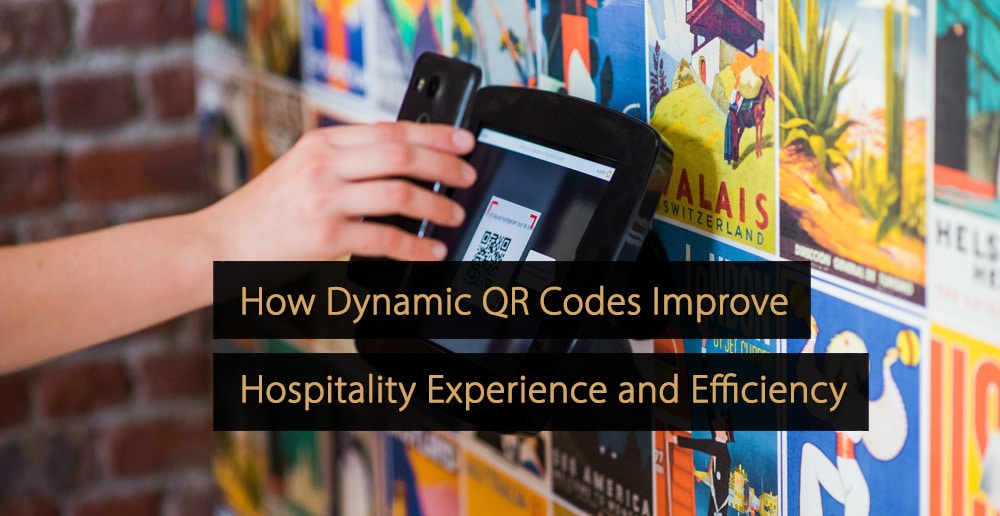
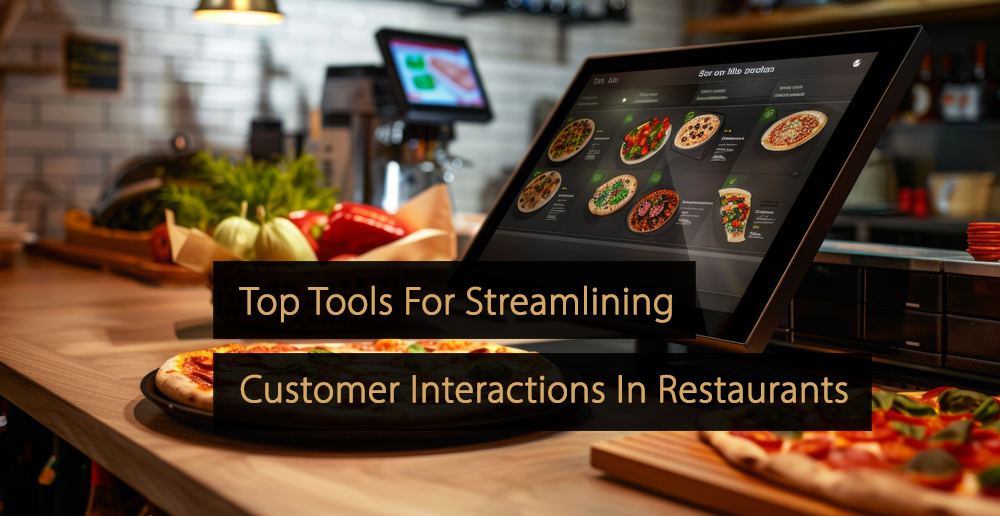
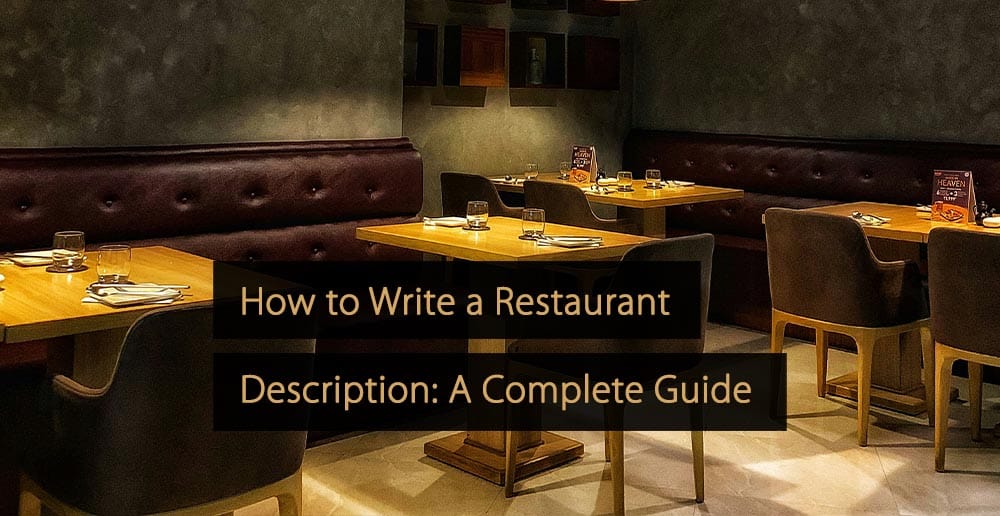
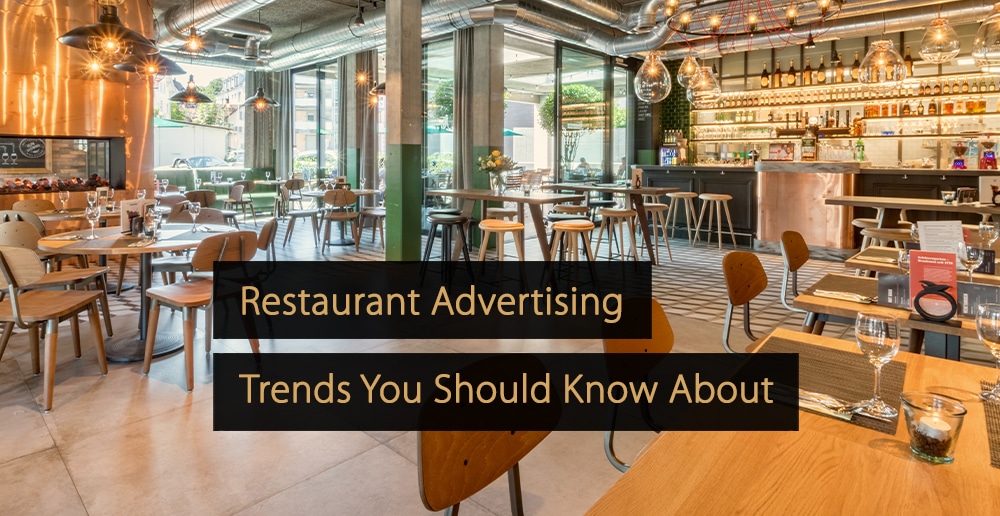
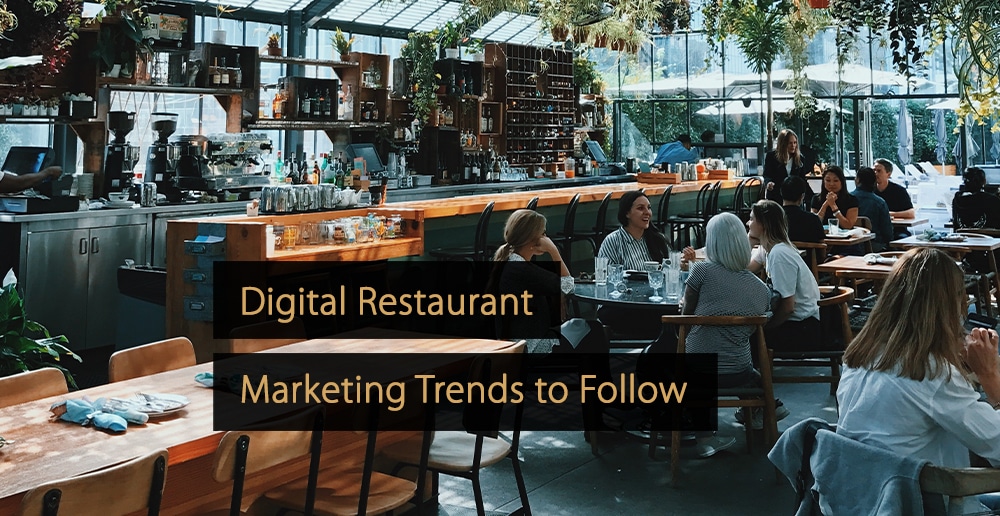
Excellent article, quite interesting marketing trends for the restaurant industry.
Who was the article’s author, and on which date was it published? Thank you very much in advance.
The Revfine.com team has written the article. The article is updated on a regular base.